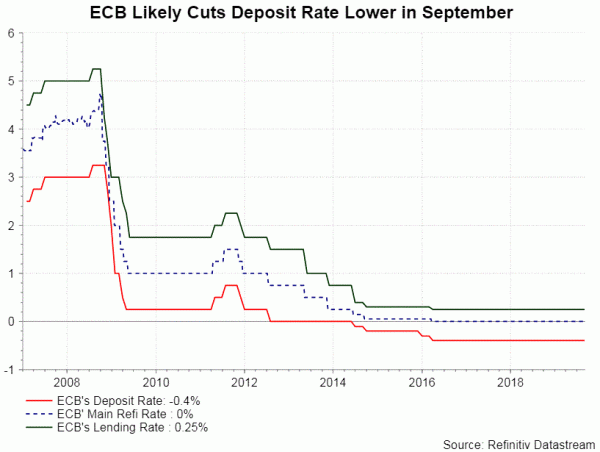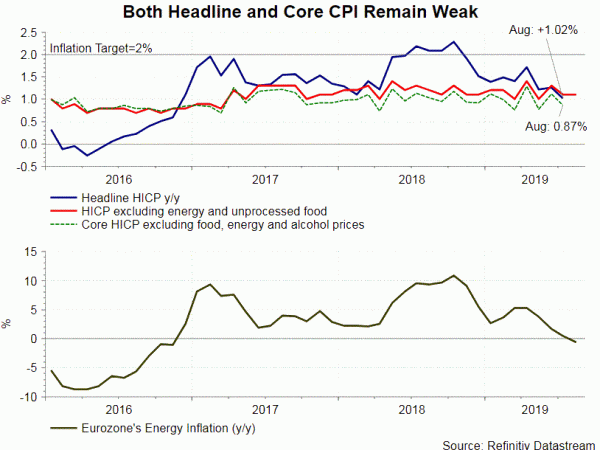We expect ECB to deliver a easing package at this week’s meeting. Economic developments since the last meeting have remained steady. However, growth is limited and risk is skewed to the downside. The latest economic projections will show downgrades in both GDP growth and inflation outlook.
We expect the easing package to consist of the followings:
1. Rate Cut: Deposit rate will be reduced by -20 bps to -0.6%. The main refi rate and marginal lending rate will stay unchanged at 0% and 0.25% respectively.
2. Tiering system: Negative deposit rate suggests that banks have to pay interest to the central bank for depositing excess reserve. This would hurt their profitability further, in particular in the low rate environment. At a tiering system, some banks will be exempted from paying interest as they deposit excess reserve to the central bank. Central banks in Switzerland, Denmark, Sweden and Japan have also adopted the tiering system, with different designs. It is widely anticipated that ECB would introduce a two-tiered system. However, the diversity of the banking systems in the 19 member nation would increase the complexity.
3. QE: A new asset purchase program will likely begin in January 2020. We expect ECB to buy assets worth of about EUR 30B per month for 9-12 months. ECB should also open the door for extension if needed.
4. TLTRO: In June, ECB announced that the interest rate in each operation of TLTRO-III will be set “at a level that is 10 bps above” the main refi-rate. The interest rate for banks whose eligible net lending exceeds a benchmark would be 10 bps above the deposit rate of -0.4%. These were a bit higher than the TLTRO-II in 2016, of which the interest rates were the main refi-rate and deposit rate, respectively. As the allotment of the first operation of TLTRO III is scheduled on September 19, ECB might relax the borrowing conditions. It might remove the 10-bps spread with the average main refi rate.
5. Forward Guidance: At July’s meeting, ECB noted that it expected the policy rates to “remain at their present or lower levels at least through the first half of 2020, and in any case for as long as necessary to ensure the continued sustained convergence of inflation to our aim over the medium term”. It is necessary for the central bank to adjust the language so as to send a dovish message. As the same time, it has be balance the divided opinions among the members. It may note that interest rate will stay at current levels or lower “well past the horizon of the net asset purchases”. Meanwhile, it may emphasize the symmetry around the +2% inflation target, reinforcing the stance that that+2% is not a cap.















